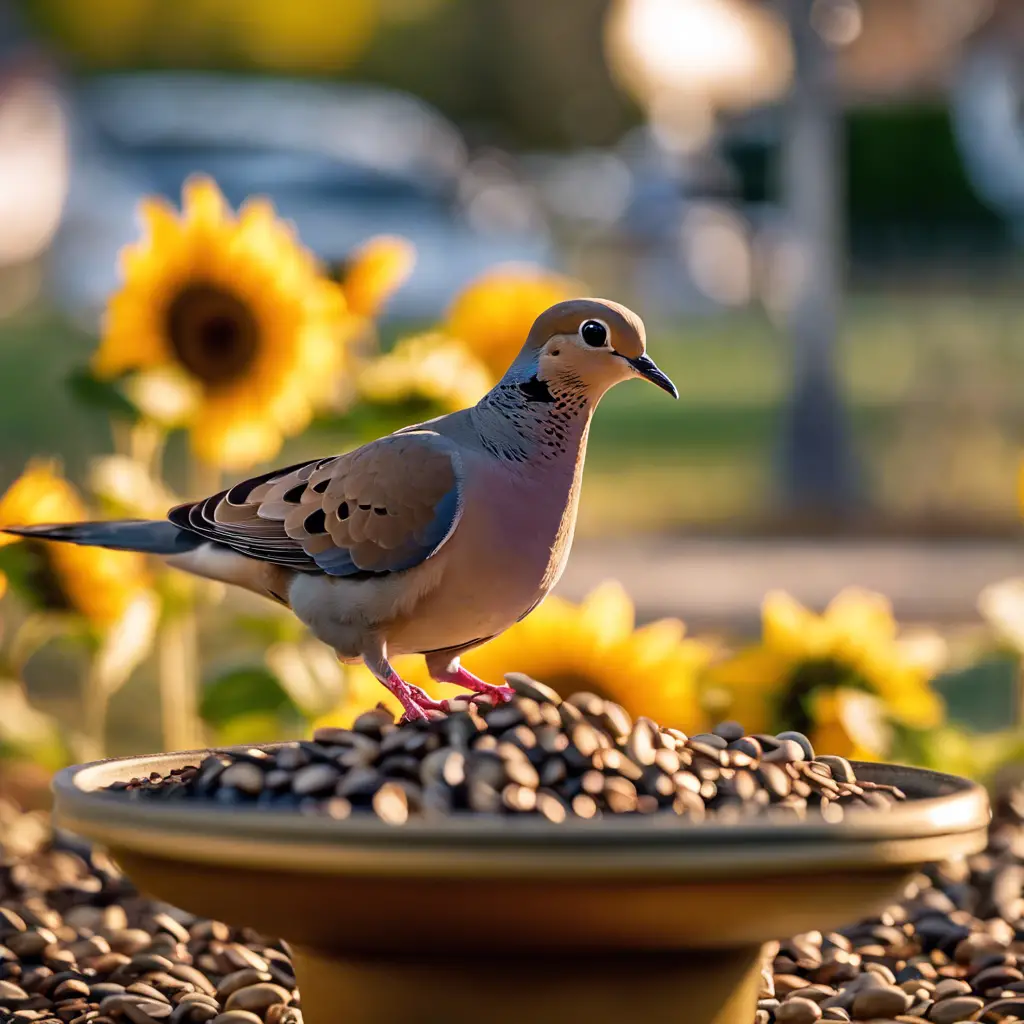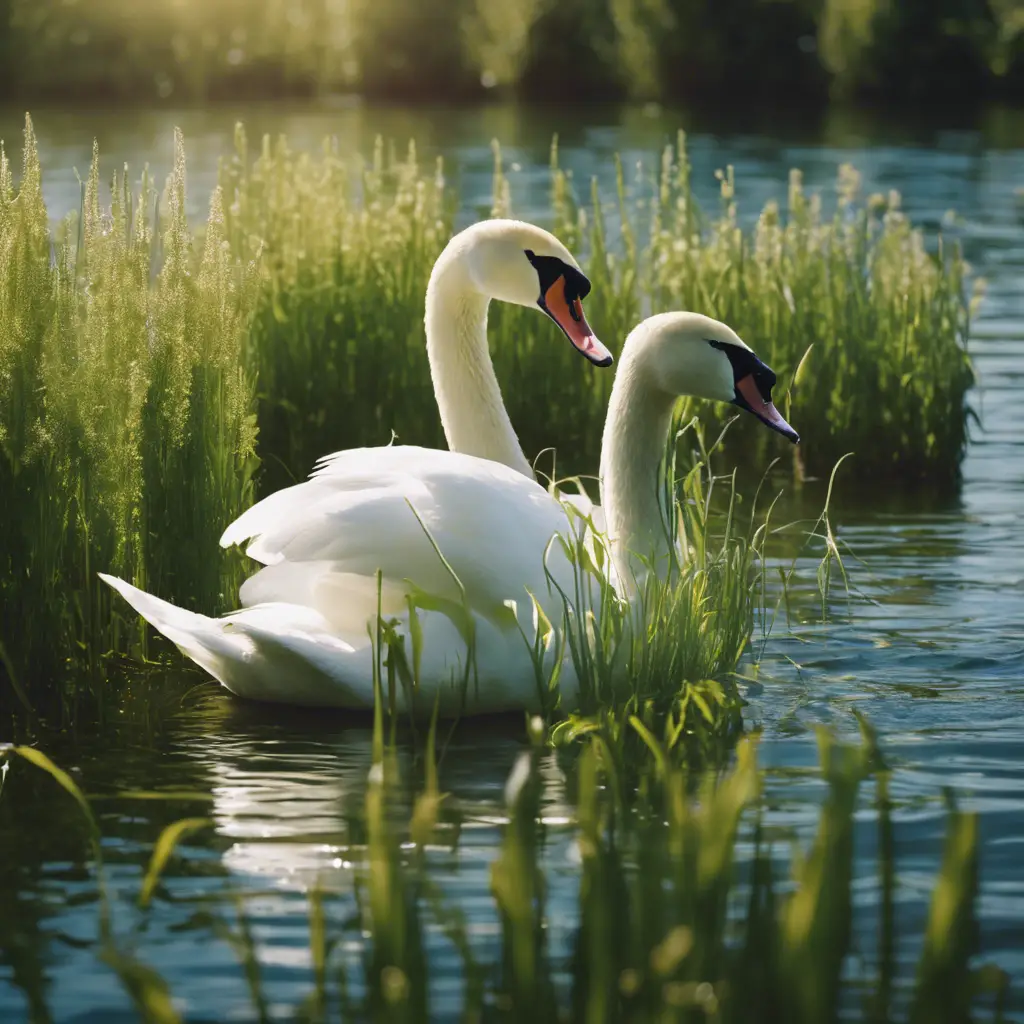In my experience, observing mourning doves has been a serene endeavor.
As an avid ornithologist, I’ve spent countless hours studying their dietary habits. I believe that witnessing their simple feast on seeds and grains in my own backyard has deepened my understanding of these creatures.
With expertise in avian diets, I’ve tailored my feeder offerings to include millet and sunflower seeds, which seems to satisfy their palate. By avoiding harmful foods like bread, I ensure their well-being.
This connection with mourning doves has not only enriched my research but also brought tranquility to my outdoor observations.
Key Takeaways
- Mourning doves primarily feast on seeds found on the ground, and their diet consists mostly of grains and seeds.
- Their favorite seeds include sunflower seeds, wild grasses, weeds, and herbs.
- Mourning doves prefer seeds and grains such as sunflower seeds, millet, and cracked corn.
- They occasionally include insects in their diet for added protein, especially during breeding season.
Mourning Dove Dietary Staples
As a Mourning Dove, you’ll primarily feast on a variety of seeds found on the ground. You’re a granivore at heart, so your daily menu is mostly made up of grains and seeds from plants like wild grasses, weeds, and herbs. Among your favorites are sunflower seeds, which provide a nutritious boost. You’re a ground feeder, preferring to peck at the earth’s bounty rather than forage in trees.
When it’s time to nurture your young, you produce crop milk, a rich, nutritious substance to feed your hatchlings. You’re not picky, especially in winter, when you’ll scour cornfields for foxtail millet. But for the most part, mourning doves eat seeds, which are plentiful and easy to find on the ground.
Preferred Seeds and Grains
You’ll find that the seeds and grains you prefer most include staples like sunflower seeds, millet, and cracked corn, which aren’t only delicious but also highly nutritious for your diet. As granivores, Mourning Doves often seek out these preferred seeds and grains to maintain their health.
When you eat seeds, especially oil sunflower seeds, they provide essential fats that are vital for your energy reserves. Here’s a glimpse of your favored menu:
- Plump, oil-rich sunflower seeds that glimmer with a promise of energy.
- Tiny, round millet grains, a feast for your foraging delight.
- Golden kernels of cracked corn, scattered like treasure on the ground.
- Safflower seeds, their bitter taste deterring competitors, leaving more for you.
These choices not only satisfy your palate but also support your nutritional needs.
Insects in Their Diet
Despite your predominantly seed-based diet, you’ll occasionally include insects in your meals for added protein. While Doves are granivores, even birds with a strong preference for seeds can’t resist the occasional berry or insect. As Mourning Doves, you don’t actively hunt like some of your avian cousins, but you do eat insects that cross your path, especially during breeding season when the need for protein is high.
Here’s a glimpse of the variety that might grace your plate:
| Insect Type | Emotional Benefit |
|---|---|
| Caterpillars | Nurturing Growth |
| Beetles | Sustaining Life |
| Ants | Community Building |
| Grasshoppers | Leaping into the Future |
Seasonal Feeding Habits
Adjusting to the changing seasons, you’re likely to find mourning doves shifting their diets to include whatever seeds or greens are currently available. In the winter months, when wild grasses are scarce, these birds become less selective and feast on a variety of seeds they find. Their adaptability ensures they thrive throughout the year, whether they’re picking at the ground beneath bird feeders or foraging in fields.
Flocks gathering around bird feeders, eagerly pecking at millet and shelled sunflower seeds.
Lone doves scouring frosty fields for remnants of wild grasses and fallen seeds.
Migratory groups settling in warmer areas, where seeds are more abundant.
Doves navigating snow-draped landscapes, unearthing hidden food sources.
These seasonal feeding habits paint a picture of resilience and opportunism in the lives of mourning doves.
Foraging Behavior Explained
When observing mourning doves, you’ll notice their foraging behavior is both methodical and opportunistic, as they meticulously search for food on the ground, pecking at seeds with precision. These birds, scientifically known as Zenaida macroura, distinguish themselves from many other songbirds by their granivorous diet. Rather than flitting from branch to branch, they prefer open spaces and fields, where they can easily spot and access seeds that make up the bulk of their diet.
Mourning doves are ground feeders, and you can attract them to your yard with a mix of high-quality wild bird food. Offer them sunflower seeds, safflower, nyjer, cracked corn, peanuts, and millet in ground feeders, large hopper feeders, or platform feeders to watch their foraging behavior up close.
Feeding Baby Mourning Doves
You’ll find that baby Mourning Doves initially rely on a nutritious substance known as crop milk during their earliest days of life. This rich, fatty food is essential for their growth and is produced by both parent doves.
After the first week, a transition in their diet begins, as the young doves start to feed on more solid foods.
- Picture the tiny Baby Mourning Doves nestled closely, eagerly awaiting the regurgitated, softened seeds from their parents.
- Envision the caring Mourning Dove parents gently cooing as they feed their offspring the life-sustaining crop milk.
- Visualize the gradual shift from exclusively liquid nourishment to the introduction of semi-solid foods.
- Imagine the chicks’ first attempts at pecking seeds, mimicking their parents and preparing for independence.
The feeding habits of baby Mourning Doves are crucial for their journey to self-sufficiency.
Common Feeder Options
Your backyard birdwatching experience can be greatly enhanced by adding a platform feeder or a ground feeder, both popular choices for attracting Mourning Doves. When choosing seeds for the first time, consider a wild bird mix that includes sunflower seeds, which are a particular favorite for these gentle birds. Shelled peanuts can also be a nutritious addition to your bird feeder offerings.
Take a look at this table to help you decide:
| Feeder Type | Seed Type | Additional Benefit |
|---|---|---|
| Platform Feeder | Sunflower Seeds | Accommodates multiple birds |
| Ground Feeder | Shelled Peanuts | Mimics natural foraging |
| Any Bird Feeder | Wild Bird Mix | Provides diverse nutrients |
| Large Hopper | Safflower Seeds | Less attractive to squirrels |
Foods to Avoid Offering
While many seeds can attract mourning doves to your feeders, there are certain foods you should avoid offering to ensure their health and dietary satisfaction. Some items are less appealing or even unhealthy for these gentle birds.
To maintain a dove-friendly environment and entice mourning doves to your backyard, steer clear of the following:
- Sunflower seeds and peanuts with shells: Mourning Doves may struggle with these harder shells.
- Flax seed and canary seed: These seeds don’t pique their interest.
- Low nutritional foods: Items like iceberg lettuce and bread don’t offer the nutrients mourning doves need.
- Fruit and nectar: These foods aren’t typical in a mourning dove’s diet and are best left out of your feeder.
Frequently Asked Questions
What Can You Feed a Mourning Dove?
You can feed a mourning dove various seeds like millet, cracked corn, and sunflower hearts. Offer these on ground feeders to attract them, but avoid foods like unshelled sunflower seeds and bread.
What Does It Mean When a Mourning Dove Visits You?
When a mourning dove visits you, it’s often seen as a sign of peace or a message to embrace simplicity. They’re symbols of love and may remind you to connect with nature.
How Do You Befriend a Mourning Dove?
To befriend a mourning dove, offer a variety of seeds on suitable feeders and ensure a peaceful, open environment. Keep cats indoors, and learn about their habits to foster a friendly relationship.
What Attracts Mourning Dove?
To attract mourning doves, you’ll want to scatter seeds on the ground or use platform feeders. They love open spaces and feel safest when they can spot predators easily, so keep that in mind.
Conclusion
In conclusion, you’ve learned that mourning doves thrive on a diet rich in seeds and grains, with the occasional insect or berry. You now understand their seasonal shifts in foraging and how they feed their young.
By offering a variety of seeds at your feeder, you’ll keep these peaceful birds coming back. Just remember to steer clear of foods that aren’t suitable for them, ensuring they stay healthy and happy in your backyard sanctuary.

An avid ornithologist, zoologist and biologist with an unwavering passion for birds and wild animals.
Dr. Wilson’s journey in ornithology began in childhood and led him to obtain a Ph.D. in Ornithology from the prestigious Avian Research Institute. He has worked closely with renowned experts in the field and conducted extensive research and field studies globally.





